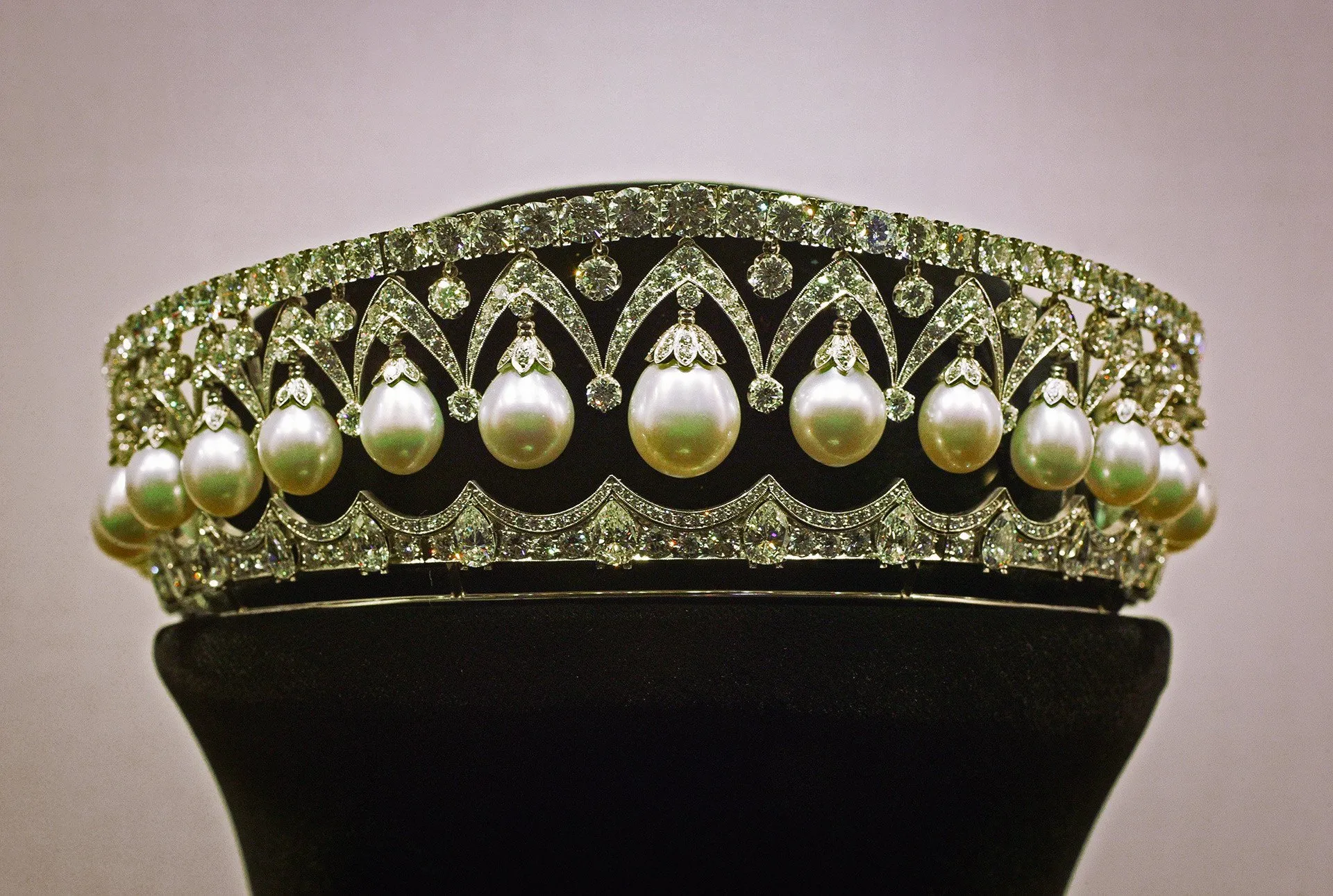
Image source : The Enchanted Manor. The Russian Imperial Crown was used in coronation ceremonies between 1762-1896. It features a 400 carat spinel, 75 pearls and nearly 5,000 diamonds.
Imperial Russia (also known as the Russian Empire) has produced some of the most beautiful, famous and sought-after piece of jewellery, with famous names such as Carl Faberge being at the heart of the history of Russian jewellery. Russian jewellery peaked in the 18th and 19th centuries when there were major historical and political changes in the country which impacted the design and production of jewellery.
A Brief History of How Russian Jewellery Evolved
The rule of Emperor Peter I “The Great” 1682-1725 introduced real style and innovation to Russian jewellery after beginning important exchanges with the Western world which is said to have changed the style of Russian jewellery forever. A steady influence of foreign jewellers combined with traditional Russian jewellers created an established sizable jewellery industry in the country.
A great example of this is Faberge, the family were expelled from Nantes in 1685 and travelled across Europe for two centuries before settling in St Petersburg. In 1842, Gustav Faberge opened a small jewellery shop in the city and in 1861, Peter Carl Faberge entered the business after finishing his training across Germany, London, Italy and France, having a huge influence on the style of jewellery it was producing with heavy French influences and enamelling.

Image source : Lang Antique Jewelry University. Enameled Cufflinks c.1900 by Fabergé.
Photo Courtesy of Christie’s.
Another important name in Russian Jewellery is Bolin. The House of Bolin began during the reign of Catherine the Great (1762-1791) and worked right up to the revolution in 1917, providing the Russian Tsar’s and Empresses with their state jewels. The Bolin house made the most expensive jewellery in Russia, in 1851 they exhibited at The Great Exhibition in London and won the highest prize called the Counsel Medal for a tiara they had produced that was set with thousands of diamonds.

Image source : Katie Callahan & Co. The Pearl Pendant Kokoshnik Tiara created in 1841 by Bolin for Empress Alexandra Feodorovna (the wife of Nicalos I), using 25 of the finest pearls hanging from diamond arches. It is often referred to as 'The Russian Beauty'.
There had always been fierce competition between western influenced vs distinct Russian jewellery. In 1859 Alexander II sought to uncover Russia’s dense history (a policy he enforced called Russification) and from this came a development of a jewellery style that was globally recognised as Russian. Moscow was home to exclusively Russian style whilst St Petersburg was home to more westernised design. Multiple influences trickled into Russian design which is now recognised as being sparkling to stand against the fashion of dark fur, hence the use for such a heavy use of silver.
The Russian State Jewels
There is an unbelievable story surrounding the Russian state jewels and their current whereabouts.
After the reign of Alexander II and Alexander III from 1855-1894, the Imperial Russian State Jewels were arguably the most important collection of jewellery in the world. In 1914 with the threat of revolution and war, all the state jewels were moved from St Petersburg to Moscow and hidden in vaults beneath the Kremlin. After being almost forgotten about for almost a decade before being rediscovered in 1926, the jewels were recorded and then subsequently sold to an American consortium and through Christie’s Auction house in London in 1927.

Image source : Russia Beyond. A large selection of the Empire's jewellery which featured in the auctions. The funds raised were used by the Soviet government to rebuild society following the Russian Revolution.
It is thought around 70% of the original collection was sold through this auction, the pieces being dispersed around the globe to places such as England, the USA and as far as the Philippines, with many of the jewel’s locations now being unknown. It is thought that many of the jewels were disassembled to be sold off, whilst some of the collection remains with private collectors and museums or has been repurchased and put on display in the museums of the Kremlin.
Three highly valuable pieces are still not located, a gold and emerald necklace, a sapphire and diamond bracelet, and a sapphire and diamond tiara, their whereabouts are completely unknown. Whilst it's extremely unlikely we will stumble across one of these jewels on our jewellery hunts, we can't help but dream about the possibility of them rediscovered and being one step closer to solving the mystery.
For now we are totally intrigued by the allure that Russian Imperial jewellery brings!
